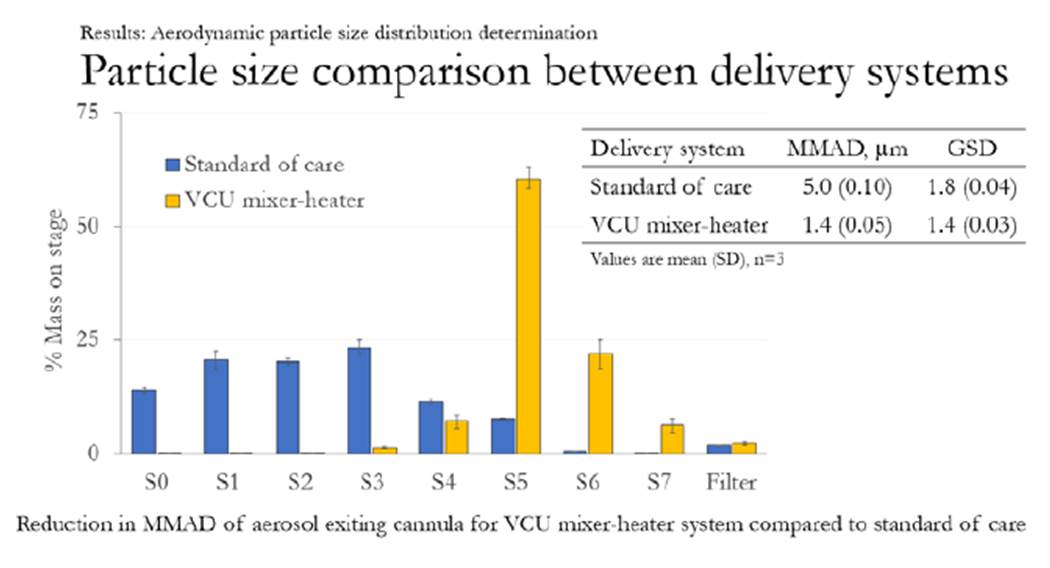Aerosol Delivery
High-Efficiency Delivery of Aerosols to Infants
A more effective method for aerosol delivery
As aerosol drug delivery in the treatment of children has gained importance over the years, the devices used have been questioned for their efficiency. Currently there are four types of aerosol delivery devices such as, nebulizers, pressurized metered-dose inhalers, dry-powder inhalers and soft-mist inhalers. For infants, a face mask is the most common interface as they are not comfortable using the mouth piece. However, the nose to lung method is not the most efficient way to deliver aerosol drugs as only about 2% of the dose is delivered to the lungs due to a high depositional loss in the nasal cavity. Another issue is the shallow, rapid breathing pattern of infants which does not allow for a full dose delivery. Virginia Commonwealth University researchers have developed a novel device that is meant to address these issues and improve the delivery of aerosol drugs to infants.
The technology
The device is a modified nebulizer which is designed to provide a higher efficient dose to infants. Using two separate nebulizers, the device is able to achieve continuous humidification by using isotonic saline which is known to be less of an irritant as compared with pure water vapor and offers aide in mucus clearance. The device also incorporates a mixer-heater interface in order to reduce the aerosol droplet size through controlled heating. Ventilation gas mixes with the aerosol exiting the nebulizer and entrains aerosol to pass between heating plates set to 60°C. The warmed air is cooled as it travels through the tubing which is a comfortable 35°C as it exits the streamlined cannula designed to reduce aerosol deposition losses in the patient interface. Benefits Include controlled drug delivery, and low depositional loss. Comparisons were then made to show efficiency models as compared with the current standard care practice (Figure 1). Figure below show particle size comparisons.

Figure 1. The above figure shows the comparison of particle size between delivery systems. It was found that there was a reduction in median mass aerodynamic diameter (MMAD) of aerosol exiting cannula for VCU mixer-heater system compared to standard of care.
